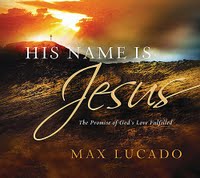
By now you have already heard a boatload on Nokia’s latest announced device, the N900. The N900 is a successor to the popular N800 and N810 Internet Tablets, but does them a few degrees better. For one, the operating system has been totally retooled and sits now on much better engineering and hardware. On the other side, you have that still open and tweakable aspect due to its Maemo Linux roots, and this endears the N900 to be the kind of device that can and should be tuned to the user’s liking.
The thing that most intrigues me about the N900 – and in some respects about the N97 – is how a device like this can fit within the toolkit of ministers and those involved in the kinds of ministry endeavors where the world is their window, desk, and workspace.
So I thought about its relevancy in that wise – as a tool for efficient working. I think about how I used my N800 (and donated N810). I see some things that are pretty much no-brainers with the N900. A device that is tailor made to be a pocketable computer that just has the power to get things done. A device that has a smattering of wireless options – including cellular wireless abilities – to pretty much utilize any connectivity point possible in order to share, report, or create information.
I think also about the cost: financial and mental. The N900, like the other tablets before, promote a different way of looking at the information that you interact with. Financially, this will be the most expensive tablet to date, though there will be options to purchase it through a carrier and get some level of assistance with the subsidy model. But you get back to getting work done and the question served is how does a 3.5in screened mobile device enable my ministry to be more personal and effecitive with my dwindling time but increasing responsibilities?
I don’t know that the technology alone can answer this. But, I know from my recent N800 experience that given some assessment time, you can not only get your value out of this device, but also enrich your life. For my N800, I turned it into a work folder. It was a large storage space, that also served as a notepad. Because it was connected, I could afford more of those moments in meetings where I simply needed to be notified of what is going on. In time, I pushed out from that usage to managing the Intranet, using the device to communicate more effecitively with others, and now – with the N97 – I’m mobile-centric, but my data and means of communication work with those around me enriching their lives. I see this with the N900 as a possible role.
That is, once you get past the price. Its expensive, and in these times, making expensive mobile purchases totally doesn’t fall on the “list of things to do now.” Nevertheless, I think that those who are purchasing this device beyond the geek-factor have the ability to see what Nokia is clearly stating with this device: you don’t need all that power of a laptop if all you will do is connect online for communications, email, and basic work. And a mobile device should be yours to choose how you connect wirelessly, the devices you use, and how you enrich the world around you.
This type of fitting into one’s life isn’t normal of mobile devices. More are doing it, but not all are this up-front about making sure that you know – at the touch of a finger – that your world is what you make of it. To that end, the N900 calls us all into an interesting piece of accountability.


